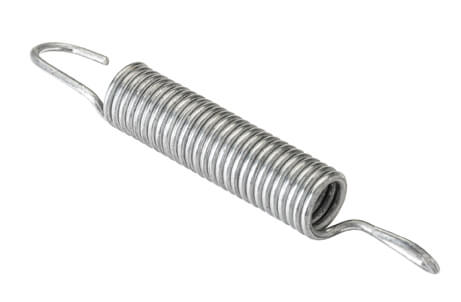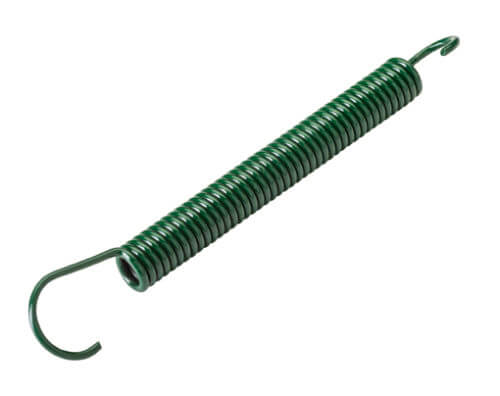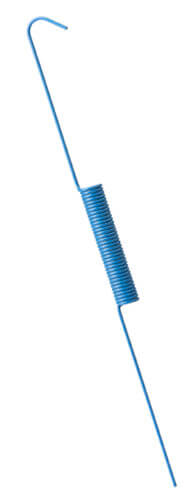Tricor Industries is a precision manufacturer of extension springs. We can fulfill most any order and we specialize in production runs or emergency orders. Contact the Tricor team if you have questions, or if you need a price quote.
The staff at Tricor has prepared the helpful information below, read on if you are a first time buyer and want to learn if extension springs are the right choice for your application:
Extension springs are helical springs designed to absorb and store energy by resisting a pulling (tensile) force. Unlike compression springs, which resist compression, extension springs exert a return force when stretched, striving to return to their initial, tightly coiled length. These springs are integral components in a wide range of applications, from simple household devices to complex industrial machinery. Understanding their design, materials, and performance characteristics is crucial for optimal functionality and longevity.

Key Features and Benefits:
- Linear Resistance: Extension springs typically exhibit a linear force-deflection relationship within their operating range. This means that the force required to stretch the spring increases proportionally to the amount of extension, ensuring predictable and consistent performance.
- Initial Tension: A unique characteristic of extension springs is their initial tension. This is the force required to overcome the tightly coiled nature of the spring and initiate extension. Initial tension is determined during manufacturing and plays a critical role in the spring’s behavior at low extensions.
- Versatile End Configurations: To facilitate secure attachment and force transmission, extension springs can be manufactured with a variety of end configurations, including:

- Machine Loops: Standard loops formed by bending the last coil.
- Cross-Over Loops: Loops with coils that cross over each other for increased strength.
- Side Loops: Loops oriented perpendicular to the spring axis.
- Threaded Inserts: For screw-type attachments.
- Hooks: Various hook shapes for quick connections.
- Rectangular Ends: For flat surface connections.
- Custom end designs are also available to meet specific application requirements.
- Material Selection: The material used in an extension spring significantly impacts its performance, durability, and operating environment. Common materials include:
- Music Wire (ASTM A228): High tensile strength, suitable for general-purpose applications.
- Hard Drawn Wire (ASTM A227): Cost-effective option for less demanding applications.
- Stainless Steel (ASTM A313): Excellent corrosion resistance, ideal for harsh environments.
- Oil Tempered Wire (ASTM A229): Enhanced fatigue resistance and strength.
- Other specialty alloys are available for high temperature, high corrosion, or extreme load applications.
- Customization: We specialize in custom extension springs, engineered to your precise specifications. We can tailor dimensions, end types, materials, and finishes to meet your unique application requirements.
Technical Considerations for Engineers:
- Spring Rate (k): The spring rate, measured in force per unit length (e.g., N/mm or lbs/in), defines the spring’s stiffness. It is calculated using the formula: k=8ND3Gd4 where:
- G = Shear modulus of the material
- d = Wire diameter
- N = Number of active coils
- D = Mean coil diameter
- Maximum Load and Deflection: Determining the maximum load and deflection is crucial to prevent spring failure. Factors to consider include:
- Stress levels under load
- Fatigue life requirements
- Operating temperature
- Initial Tension Calculation: The initial tension (Pi) can be calculated or measured, and it affects the force at any given length of the spring. It is a critical design factor.
- Fatigue Life: For dynamic applications, fatigue life is a critical consideration. Proper material selection, stress analysis, and surface treatments can significantly improve fatigue resistance.
- End Loop Stress: The stress concentration at the end loops is often higher than in the spring body. Careful design and manufacturing are essential to minimize stress and prevent premature failure.
- Natural Frequency: The spring’s natural frequency should be considered to avoid resonance, which can lead to excessive vibration and failure.


For First Time Buyers- Here is a step-by-step guide on how to specify and buy extension springs:
- Application Requirements: Clearly define the application’s requirements, including:
-
- Force and deflection range
- Operating environment (temperature, corrosion)
- Space constraints
- Cycle life requirements
-
- End Configuration: Select the appropriate end configuration for secure attachment and force transmission.
- Material Selection: Choose a material that meets the application’s performance and environmental requirements.
- Quality and Reliability: Partner with a reputable spring manufacturer that adheres to strict quality control standards.
- Customization Options: Inquire about customization options to meet specific application needs.